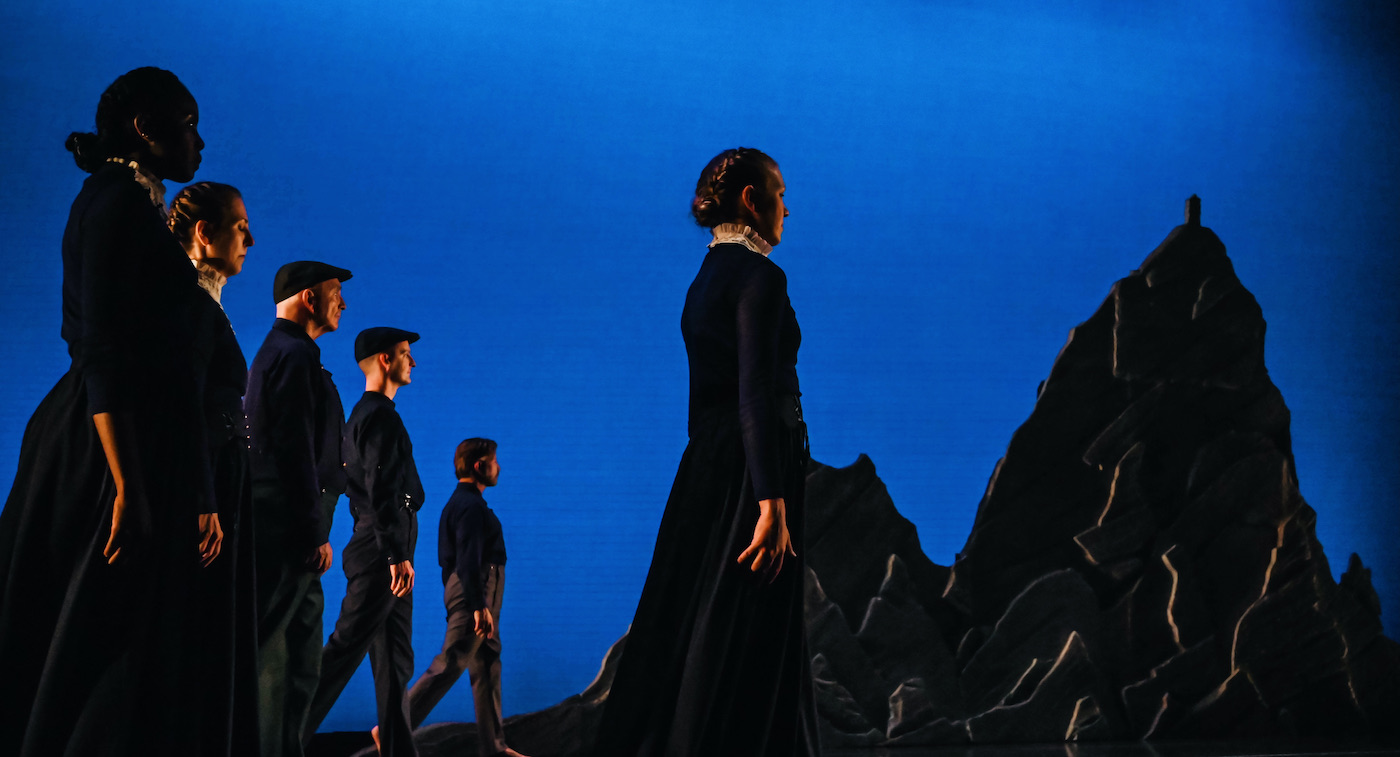Dancing to the Keepers of the Flame

Dana Lawton has admitted to being obsessed with the Farallon Islands and the swarthy keepers and families who served as lighthouse keepers there back in the mid-1800s, working the Fresnel lens that warned ships approaching San Francisco to stay away from the fog-shrouded rocky islands.
Fortunately, Lawton is a choreographer who also runs a Bay Area dance company that carries her name, and had an outlet for her fixation, which was originally kindled when she heard Jennifer Kulbeck read aloud “Off the Rope,” one of a set of 13 poems she’d composed about the Farallons as part of her master’s degree.
“The island is such a small and inhospitable place,” said Lawton, who was born and raised in Santa Barbara. “There is no beach, no vegetation. And the fog is so dense that when the children would go out to play, their parents would tether them to boulders so they wouldn’t get blown off the island. Immediately I just saw movement in my head.”
That vision turned into an evening-length work called The Farallonites, which premiered in the Bay Area in the fall and has its third presentation at the Lobero Theatre at 3 and 7 pm on February 4.
Lawton’s choreography is set to Kulbeck’s words adapted from her own poems and music by Kulbrek’s husband, composer Thomas Edler. The trio spent four years fashioning and refining the piece with Dana Lawton Dance’s dozen-member company for the work, whose ages range from 23-75, all with a devotion to authenticity.
“I looked at historical photographs, read logbooks, visited lighthouses across the country, just immersing myself in this fascinating culture of people who had to do everything themselves and wait six months for the boats to arrive with supplies. They’re like today’s first responders, people who give up their (regular) lives to keep safe people that they’ll never meet,” Lawton said.
Meanwhile Edler plumbed music from the Library of Congress and some of the most popular sheet music from the late 1850s and took some creative license in re-composing and arranging the music to support both the words and the imagery of the dancer’s movement, while inspiration for the period costumes created by one of the dancers came from newspaper photographs of the era, and the set and visual art was designed by Jon Altemus, who has actually visited the Farallons.
“That’s actually part of my goal to get everybody to do their own little research,” Lawton said. “I’d love it if the audience developed their own curiosity about that lighthouse or the time in history.”
But while the Farallons are the specific time and place of the work, the humanity that unfolds is universal, she said.
“The idea of community commitment, tenacity, fortitude transcends beyond the islands. We can see fathers and daughters together, men figuring out how to keep the light lit, the children carrying the water up the hill. It’s about the appreciation of unsung heroes.”
Visit www.lobero.org for tickets and more information.





